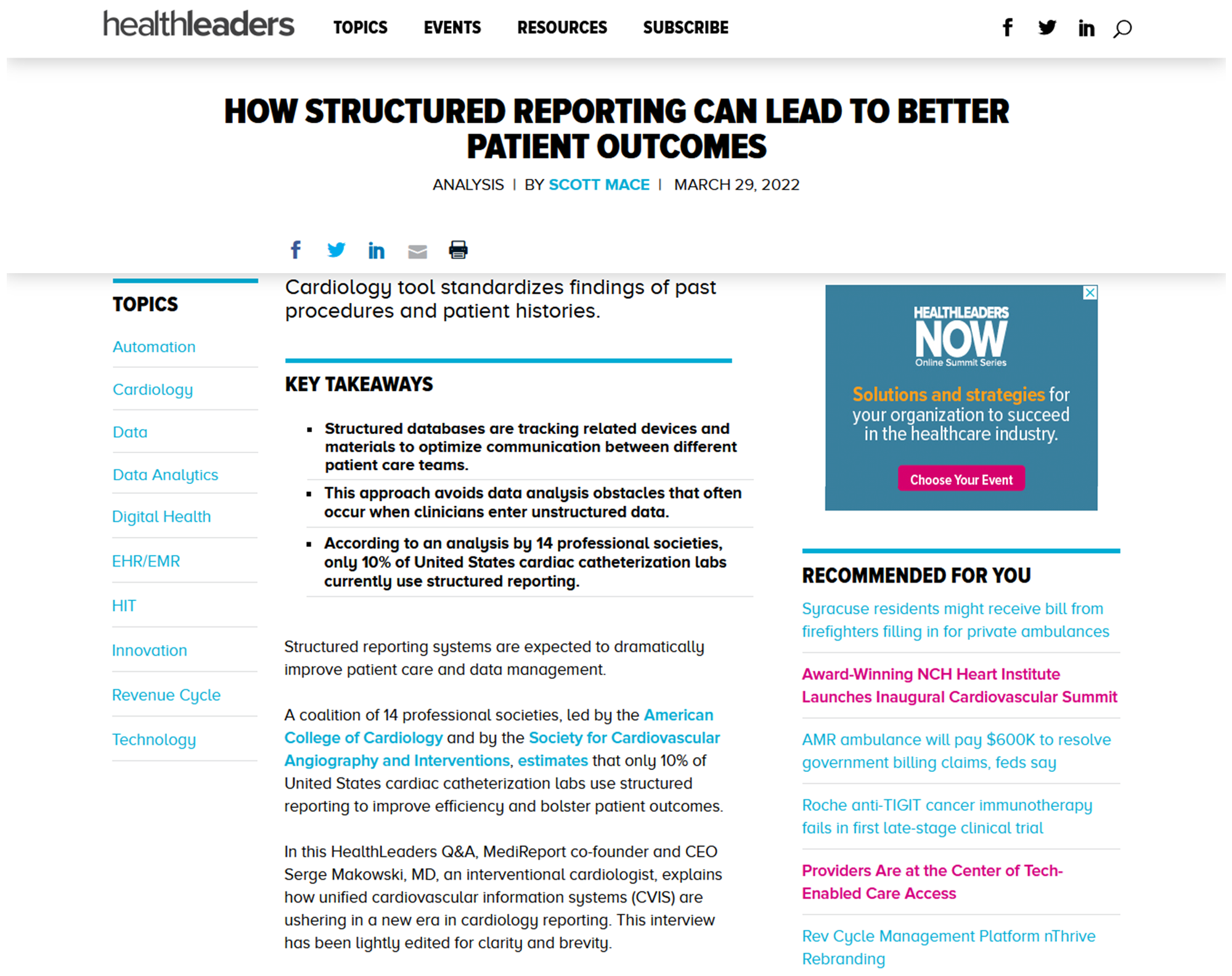How Structured Reporting Can Lead to Better Patient Outcomes
Interview of Serge Makowski by HealthLeaders – March 2022
In this HealthLeaders Q&A, MediReport co-founder and CEO Serge Makowski, MD, an interventional cardiologist, explains how unified cardiovascular information systems (CVIS) are ushering in a new era in cardiology reporting.
Extract
A coalition of 14 professional societies, led by the American College of Cardiology and by the Society for Cardiovascular Angiography and Interventions, estimates that only 10% of United States cardiac catheterization labs use structured reporting to improve efficiency and bolster patient outcomes.
In compliance with Meaningful Use, various specialties, including cardiovascular, are increasingly adopting structured reporting to benefit from reduced errors for future diagnostic or care decisions, lower semantic errors and increase in care quality and consistency while abiding by the latest clinical guidance.
Thus, the use of dictation and free text makes it difficult for physicians to search for and locate valuable information and procedure findings retroactively. In this regard, structured reporting can bolster improved quality of care, as it ensures that clinical data such as patient history, past treatments, findings, and procedure results are standardized and easily retrievable for any caregiver that will treat the patient throughout the entire care continuum.
Modern and flexible structured reporting systems such as CardioReport 360™, the web-based CVIS by MediReport, employ discrete data fields to collect structured and standardized data from all physicians. These discrete data fields are integrated in a precise order throughout the procedure to collect structured pertinent data and rely on requested criteria from registries (for instance, NCDR and SCAI) or international classifications like SNOMED. Based on this structured data, the structured reporting system then generates near real-time reports and allows the facility to reuse the discrete data in various instances, like clinical research or registries.
All of this results in greater physician satisfaction, as it allows them to save a great amount of time and resources when performing their clinical reporting and administrative tasks with better outcomes. This, in turn, has a strong downstream effect on improving billing accuracy and reducing costs.
“Modern structured reporting systems like CardioReport 360™ CVIS facilitate the acquisition of live data by seamlessly interfacing with the EHR, the HIS, and modalities (like the PACS, Hemodynamic system, X-ray station) in real-time. This allows the system to automatically, and effortlessly, capture pertinent live data, before (i.e. patient history, consent), during (i.e findings, hemodynamic values, dosimetry, measurements) and after (i.e. patient recovery, adverse event) the procedure.” Serge Makowski
To find out more, check out the interview in HealthLeaders.

MARCH 31, 2022
